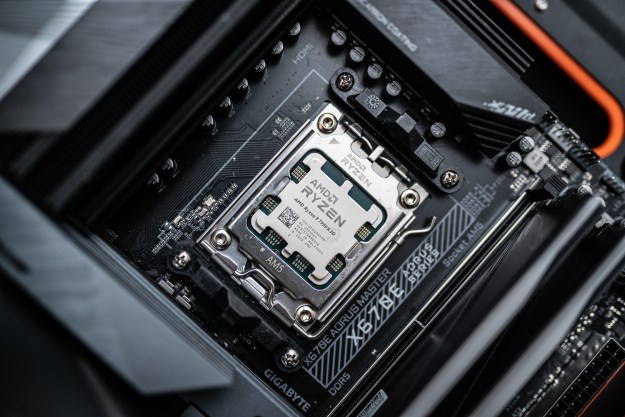
Obviously, such an announcement left us with as many questions as answers. Thanks to the Intel Developer Forum keynote in San Francisco, we now know another piece of the puzzle – how Intel plans to roll out 3D XPoint to customers.
It will do so under a new brand, Optane, and the product will become available sometime in 2016. Surprisingly, Intel said that the brand will range from “datacenters to ultrabooks.” When 3D XPoint was first announced, it seemed as though it might only come to high-end enterprise systems first, then trickle down to consumers. This latest announcement, though, indicates consumers will be able to experience the new drive technology sooner rather than later.
To demonstrate the performance of Optane, Intel put it up against the company’s own P3700, a data center drive that’s similar to the enthusiast-oriented 750 Series. While the P3700 is ridiculously quick, the demo Optane drive blew it away in Input/Output Operations per Second (IOPS), a key measure of drive performance, offering up to seven times the performance.
Unfortunately, IOPs is not a particularly relevant benchmark for consumers, as it’s a raw measure of operations a drive can handle. Consumer PCs don’t typically encounter workloads of that type. Random access times and sustained read/write bandwidth are more important to most PCs, and unfortunately Intel didn’t demonstrate either. That doesn’t necessarily mean 3D XPoint is slow in those areas, but it may indicate that the new technology IOPS performance is its standout trait.
We now have name, and an indication that Intel will bring 3D XPoint to all levels of the market next year. The company remained silent on the details of the architecture, pricing and launch windows. That’s understandable given how far out the drive is – we probably won’t hear specifics until CES 2016, and even that may be early.
Editors' Recommendations
- 4 CPUs you should buy instead of the Ryzen 7 7800X3D
- Nvidia turns simple text prompts into game-ready 3D models
- Glasses-free 3D gaming can be amazing — but only if it’s done right
- AMD’s upcoming Ryzen 5 5600X3D could completely dethrone Intel in budget builds
- 3D printed cheesecake? Inside the culinary quest to make a Star Trek food replicator


